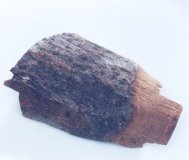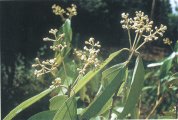Chinese Cassia Bark
http://www.100md.com
《e Natural Health Center》
 |
 |
 |
 |
Herbs for Warming the Interior
Chinese Cassia Bark
Latin:
Cortex Cinnamomi
Origin:
The aromatic bark of Cinnamomum cassia Presl., a plant of the family Lauraceae. Similar to true cinnamon, cassia bark has a more pungent, less delicate flavour and is thicker than cinnamon bark. It contains from 1 to 2 percent oil of cassia, a volatile oil, the principal component of which is cinnamic aldehyde. Cassia bark is used as a flavouring in cooking and particularly in liqueurs and chocolate. Southern Europeans prefer it to cinnamon, but, in North America, ground cinnamon is sold without distinction as to the species from which the bark is obtained.
, http://www.100md.com
Cassia bark is peeled from stems and branches and set aside to dry. Some varieties are scraped. While drying, the bark curls into quills. The colour varies from light reddish brown for the thin, scraped bark to gray for the thick, unscraped bark. Ground cassia is reddish brown in colour. Cassia from China is less aromatic than that from Vietnam and Indonesia. Cassia from all three countries has a sweet, aromatic, and pungent flavour. Vietnamese, or Saigon, cassia is particularly highly esteemed.
, 百拇医药
Cassia buds, the dried, unripe fruits of Cinnamomum cassia and Cinnamomum loureirii, have a cinnamon-like aroma and a warm, sweet, pungent taste akin to that of cassia bark. The whole buds are added to foods for flavouring. The brown, immature fruit is snugly held in a cuplike, hard, wrinkled, grayish-brown calyx (the whole commonly called a bud) varying in size but ordinarily 11 millimetres long, including the calyx tube; the upper part of the bud may be about 1 cm in diameter.
, http://www.100md.com
Confusion sometimes arises with another group of plants because Cassia is the generic name of an extensive genus of leguminous plants, which, in addition to various other medicinal products, is the source of senna leaves.
Properties:
Pungent and sweet in flavor, hot in nature, it is related to the spleen, kidney, heart and liver channels.
Functions:
, 百拇医药
Supplements fire and restores yang, dispels cold and kills pain as well as warms the channels and removes obstruction in the collaterals.
Applications:
1. To treat impotence and retention of cold in the uterus due to the deficiency of spleen-yang, palpitations with asthma of the insufficiency type, etc.:
This herb is mostly used together with monkshood root (Radix Aconiti Praeparata), prepared rehmannia, shelled medicinal cornel fruit (Fructus Corni), etc., e.g., Shenqi Wan, You Gui Yin.
, http://www.100md.com
2. To treat cold pain in the chest and abdomen and cold hernia with pain:
a) Cold pain in the abdomen due to invasion of cold into the interior or deficiency-cold in the spleen and stomach:
This herb can be ground alone into powder and decocted with wine for oral administration or used together with dried ginger, lesser galangal (Rhizoma Alpiniae Officinarum), long pepper (Fructus Piperis Longi), etc.
, http://www.100md.com
b) Vomiting with abdominal pain, cold limbs and loose stools due to yang deficiency of the spleen and kidneys:
This herb is often used together with monkshood root (Radix Aconiti Praeparata), ginseng, dried ginger, etc., e.g., Gui Fu Lizhong Wan.
c) Cold hernia and abdominal pain:
This herb is mostly used together with evodia fruit, fennel, etc.
3. To treat lumbago with arthralgia due to cold, obstruction of qi in the chest and deep-rooted carbuncles:
, 百拇医药
a) Lumbago with arthralgia due to cold:
This herb is mostly used together with angelica root (Radix Angelicae Pubescentis), parasitic loranthus, eucommia bark, etc., e.g., Duhuo Jisheng Tang.
b) Epigastric pain due to obstruction of qi in the chest as a result of suppression of chest yang and invasion of pathogenic cold into the interior:
This herb can be used together with monkshood root (Radix Aconiti Praeparata), dried ginger, zanthoxylum, etc.
, http://www.100md.com
c) Deep-rooted carbuncles due to deficiency of yang and stagnation of cold:
This herb can be used together with deerhorn glue, blast-fried ginger, ephedra, etc., e.g., Yang He Tang.
4. To treat amenorrhea and dysmenorrhea:
This herb can be used together with Chinese angelica, chuanxiong (Rhizoma Ligustici Chuanxiong), fennel, etc., e.g., Shaofu Zhuyu Tang.
5. To treat weakness due to prolonged illness and insufficiency of qi and blood:
, 百拇医药
The addition of cassia bark into a recipe to nourish qi and replenish blood can stimulate the growth of qi and blood.
Dosage and Administration:
2-5 g.
Decoct this herb for oral administration. It should be decocted later or administered separately. Grind it into powder for oral administration with boiled water.
Cautions on Use:
, http://www.100md.com
It is averse to red kaoline.
Reference Materials:
'Other Medical Records of Famous Physicians' :
"To treat cold and heat in the epigastrium and abdomen, cold syndromes, spasms due to cholera, headache, lumbago and coughing by warming the spleen and stomach, activating qi in the liver and lungs, inducing diaphoresis, relieving restlessness, stopping excessive sputum, causing abortion, reinforcing bones and joints, clearing obstruction from blood vessels, regulating and making up for insufficiency and activating the potency of herbs."
, 百拇医药
'Realistic Approach to Herbs' :
"Supplementing fire from the gate of life to a large extent, replenishing yang and treating yin."
"It is very effective on ailments caused by cold and stagnation, such as deep stubborn cold in the interior, wind-cold syndromes in the ying and wei systems, spontaneous perspiration due to yang deficiency, cold pain in the abdomen, coughing or dyspnea with stagnation of qi, dislike for food due to deficiency of the spleen, diarrhea due to excessive dampness, stagnation in blood vessels, retention of the placenta and conjunctive congestion with swelling and pain."
, 百拇医药
Toxic or Side Effects:
Modern Researches:
This herb contains a volatile oil with cinnamic aldehyde, cinnamyl acetate, phenylpropyl acetate, etc., as its main ingredients. It also contains phlegm, tannin, etc.
This herb can dilate blood vessels, promote blood circulation, increase blood flow in the coronary artery and brain and reduce the resistance of blood vessels. In vitro, its methyl alcohol extract and cinnamic aldehyde can resist platelet aggregation and thrombase. Cassia oil, cinnamic aldehyde and sodium cinnamate have tranquilizing, analgesic, antipyretic and anticonvulsant effects.
, 百拇医药
Cassia oil has a moderate stimulant effect on the gastric mucosa and through the stimulation of osphresis, it reflexively promotes the functions of the stomach, promotes bowel movements, increases the secretion of the digestive tract, enhances digestive functions, removes stagnated qi in the digestive tract and moderates spasmodic pains of the stomach and intestines. Cassia oil may cause congestion of the uterus.
Cassia oil can inhibit Gram-positive and Gram-negative bacteria. The ether, alcohol and water infusions of the cassia bark have certain inhibitory effects on a variety of pathogenic fungi., 百拇医药